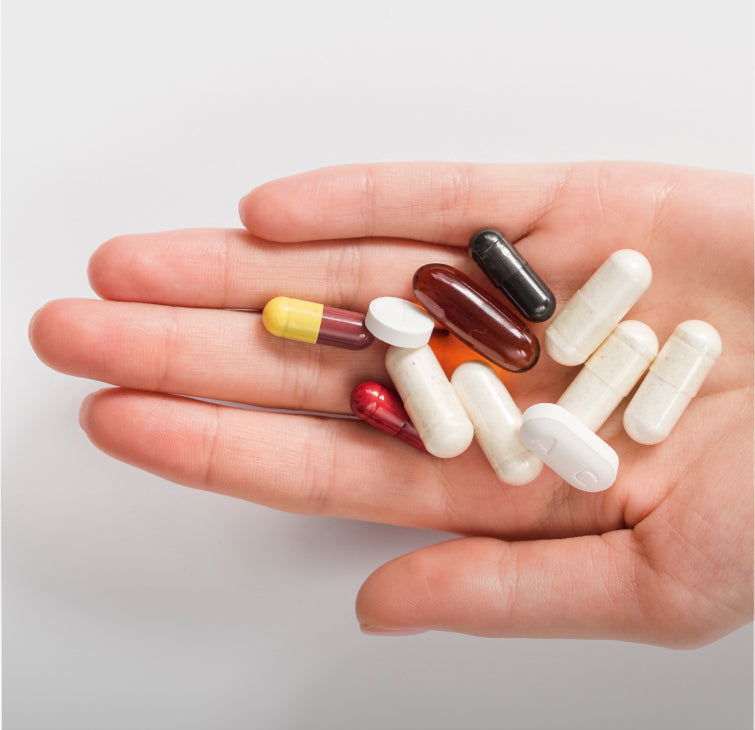Vitamin C is particularly important for the proper functioning of the body.
It is one of the main “anti-aging vitamins” due to its action on protein synthesis, including collagen, and its antioxidant role.
Poorly stored in the body and easily eliminated in urine, it must be provided as regularly as possible through food or supplements, preferably in moderate but frequent doses. Fresh fruits and vegetables are the almost exclusive source of dietary vitamin C.
However, nearly 50% of the population has too low a vitamin C intake , resulting in blood levels below the desired level and symptoms that are also difficult to perceive.
We take stock below!
Adequate daily intake of vitamin C
The adequate physiological level of vitamin C is measured by its blood (plasma) concentration.
It is expressed in micromoles per liter of blood (noted: µmol/L) or in milligrams per liter with the conversion: 1 mg/L = 5.67 µmol/l.
A satisfactory blood vitamin C level is 50-70 µmol/liter. Even when massive doses of vitamin C are ingested, the blood level does not exceed 80-90 µmol/liter, with excess amounts being eliminated in the feces or urine.
To determine the levels of dietary intake that allow for a correct blood level, scientific studies all provide converging results: regular daily intakes of around 60 mg are sufficient.
The Nutritional Recommendations for adults defined by health authorities (ANSES, EFSA etc.) are slightly overestimated, around 100 to 110 mg, as a precautionary principle to take into account the risks of assimilation.
The different levels of vitamin C insufficiency: deficiency or hypovitaminosis
Severe deficiency must be differentiated from deficiency.
Severe vitamin C deficiency , which can lead to scurvy if prolonged, corresponds to levels below 11µmol/Liter.
Moderate hypovitaminosis corresponds to blood levels between the critical threshold of 11 µmol/L and the minimum satisfactory threshold of 50 µmol/L.
In this range, moderate vitamin C deficiency induces mild, non-specific symptoms that are difficult to detect in the short term:
- Fatigue
- Less iron fixation
- Lower collagen synthesis.

“ regular and moderate daily intake is sufficient for a satisfactory blood level”
Severe deficiency: the case of scurvy
Vitamin C deficiency can lead to scurvy when it is prolonged. However, it is rare nowadays and only affects 5% of the population.
It mainly affects people in situations of social, economic or psychological vulnerability.
The US National Health and Nutrition Examination Survey showed that 6% of the population aged six and over had vitamin C concentrations below 11.4 μmol/L.
These figures are consistent with the estimates of Professor Lindblad (Denmark) who considers that 5 to 10% of Western populations are affected by a severe deficiency.
In France, the study by the Hercberg team (Inserm) in 1994, involving more than 1,000 people in the Paris region, obtained similar figures.
Thus, the study concluded that 5% of women were affected by a severe deficiency compared to 12% of men, but the frequency of deficiencies increased significantly among seniors (+65 years): 12% of women and 20% of men were affected.
Mild vitamin C deficiency: hypovitaminosis
While vitamin C deficiency is rare, hypovitaminosis affects nearly 50% of the population.
Moderate hypovitaminosis (with thresholds below 40µmol/l) can affect nearly 50% of the population. Here again, the people affected are marked by strong social characteristics (vulnerable people, etc.).
For example, average data from the "SUVIMAX" study in France measured average serum vitamin C concentrations of 59 µmol/L for women and 53 µmol/L for men at the start of the experiment.
These average values imply that at least 1/3 of the people tested were hypovitaminotic C (see graph below)

*According to the SUVIMAX France study: average 56µmol/l (men + women)
What causes vitamin C deficiency?
The causes of vitamin C deficiency are numerous and are linked to several factors.
Among the main reasons, we will remember the following:
- Low dietary intake of vitamin C: diet poor in fresh vegetables
- Increased needs for certain populations: smokers, pregnant and breastfeeding women, diabetics, alcoholics.
- Conditions that disrupt the absorption of vitamin C: Crohn's disease, intestinal diseases
- Poorly balanced weight loss diets
- Social isolation (common in older people)
- Malnutrition
In terms of nutrition, the lack of consumption of fresh fruits and vegetables is the main cause of insufficient vitamin C intake.
Despite the recommendations, we note that the consumption of ultra-processed foods, low in vitamin C, is increasing faster than that of fresh vegetables.
This is a major issue in food education!
Symptoms of Vitamin C Deficiency
Severe vitamin C deficiency affects approximately 5 to 10% of Western populations.
In the majority of cases, their impact does not go as far as triggering scurvy because minimal intake is enough to prevent it, but all physiological mechanisms are seriously affected.
On the other hand, moderate vitamin C deficiencies are common and affect 30 to 50% of the population, but the symptoms make the deficiency difficult to identify:
- Lack of tone
- Anemia more or less perceived
- Lower resistance to infections.
- Less Collagen Synthesis
- Dry skin
- Slow healing
- Hair loss
The impacts on collagen synthesis, metabolic and antioxidant reactions (dry skin, healing, etc.) are very difficult to quantify and identify because they can have multiple causes, including a lack of vitamin C.
How to increase your vitamin C levels?
Regular intake of moderate doses of around 40 to 80 mg/day and a diet including fresh fruits and vegetables ensure that vitamin C requirements are fully met.
They also allow the effects of deficiencies to be quickly corrected.
An optimal blood level of vitamin C (60/µmol/l) allows you to fully benefit from all the benefits of vitamin C:
- Anti-aging
- Stimulating collagen synthesis
- Immune system stimulant
- Improved iron fixation
It is also possible to take a vitamin C course using a food supplement to ensure a satisfactory daily intake.
Bibliography:
- https://www.sciencedirect.com/science/article/abs/pii/S1957255709732985
- “Lessons from SU.VI.MAX: Benefits and Harmful Effects of Antioxidant Micronutrients” (Hercberg, Galan)
- Effects of vitamin C supplementation on blood pressure: a meta-analysis of randomized controlled trials. SP Juraschek & al.. Am J Clin.Nutr. 2012; 95 (5): 1079-1088. 7 - FE Harrison
- https://www.santepubliquefrance.fr/determinants-de-sante/nutrition-et-activite-physique/articles/les-resultats-de-l-etude-esteban-2014-2015
- https://pubmed.ncbi.nlm.nih.gov/34836166/ Insufficient Vitamin C Levels among Adults in the United States: Results from the NHANES Surveys, 2003-2006
- https://www.ncbi.nlm.nih.gov/pmc/articles/PMC3775232/
- Regulation of Vitamin C Homeostasis during Deficiency
- Maiken Lindblad , Pernille Tveden-Nyborg , and Jens Lykkesfeldt *
- Study of vitamin C deficiency in a hospitalized geriatric population - Richard Colombo CHU Nancy 2001
 04 74 03 98 80
04 74 03 98 80










